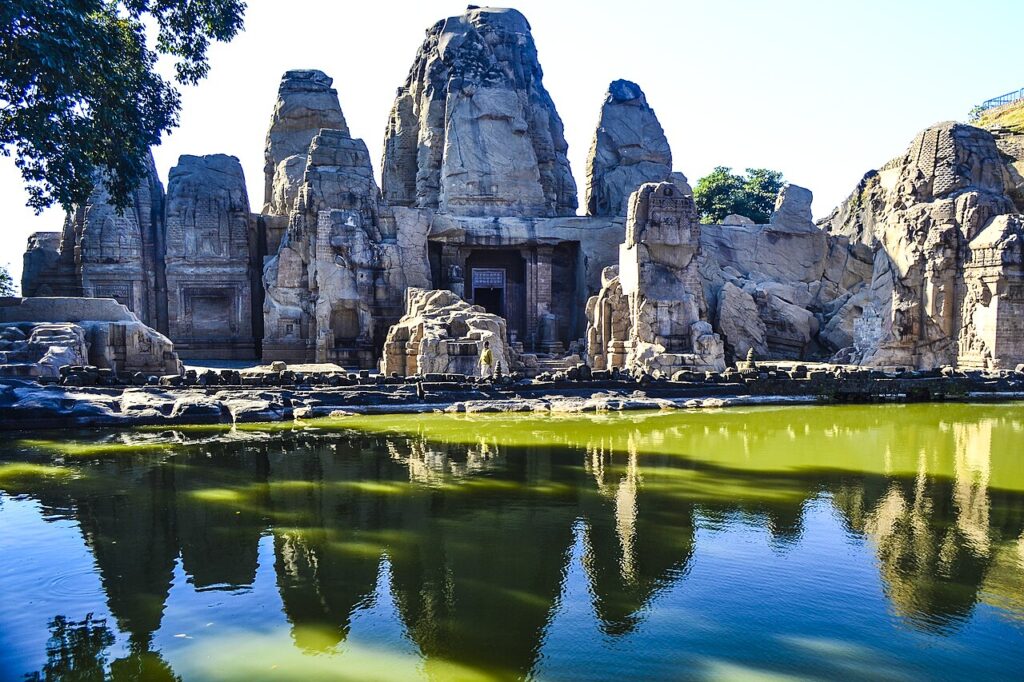The Masroor Rock Cut Temple in Kangra is a testament to the architectural brilliance and cultural heritage of ancient India. Situated amidst the picturesque foothills of the Himalayas, this temple complex stands as a symbol of devotion and artistic skill. Constructed entirely from a single rock in the 8th century, the temple showcases intricate carvings and sculptures that leave visitors in awe. This essay will delve into the historical significance, architectural marvels, and religious importance of the Masroor Rock Cut Temple, highlighting its value as a cultural treasure for generations to come.
The historical significance of the Masroor Rock Cut Temple cannot be understated. Its construction dates back to the reign of the Katoch dynasty, which ruled over the Kangra region during the 6th to 18th centuries. The temple’s architectural style reflects a blend of Indo-Aryan and Dravidian influences, showcasing the fusion of cultures that characterized ancient India. The temple’s remote location suggests that it was built as a secluded place of worship for the prevalent Hindu community in the region. It is fascinating to consider the determination and skill required to carve such intricate and extensive structures into solid rock, a testament to the expertise of the ancient craftsmen who brought this temple to life.

The architectural marvels of the Masroor Rock Cut Temple astound visitors from all over the world. The temple complex boasts fifteen individual shrines, each meticulously carved with exquisite detail. The main shrine features a sanctum sanctorum surrounded by smaller shrines, all adorned with intricate sculptures of Hindu deities, celestial beings, and mythical creatures. The geometric precision and sheer grandeur of these carvings showcase the artistic brilliance of the temple’s creators. It is awe-inspiring to observe the craftsmanship evident in every nook and cranny of the temple, which have stood the test of time for more than a thousand years.
Religiously, the Masroor Rock Cut Temple holds great importance for Hindu devotees. It is believed to be dedicated to Lord Shiva and his consort, Parvati, making it a sacred destination for worship and pilgrimage. The idols within the sanctum sanctorum are revered by devotees who flock to this ancient site seeking spiritual solace. The temple’s architecture, with its meticulous carvings and spiritual symbolism, creates a serene atmosphere conducive to religious contemplation. It serves as a link to the ancient past and reinforces the significance of faith in contemporary society.
The Masroor Rock Cut Temple also serves as a cultural treasure for generations to come. It represents the rich artistic heritage of ancient India and offers a glimpse into the craftsmanship and engineering prowess of our ancestors. Preservation efforts must be intensified to protect the temple from natural decay and human interference. Furthermore, promoting awareness about this historical gem and its cultural significance among the younger generation will help preserve its legacy and ensure its recognition as a UNESCO World Heritage Site.
In conclusion, the Masroor Rock Cut Temple in Kangra stands as a testament to India’s rich cultural heritage and architectural brilliance. With its historical significance, architectural marvels, religious importance, and cultural value, the temple serves as a window into the ancient world and a bridge between the past and the present. As a graduate school student, appreciating and understanding the significance of such heritage sites is vital in preserving and promoting the cultural diversity and historical legacy of our country for future generations.


